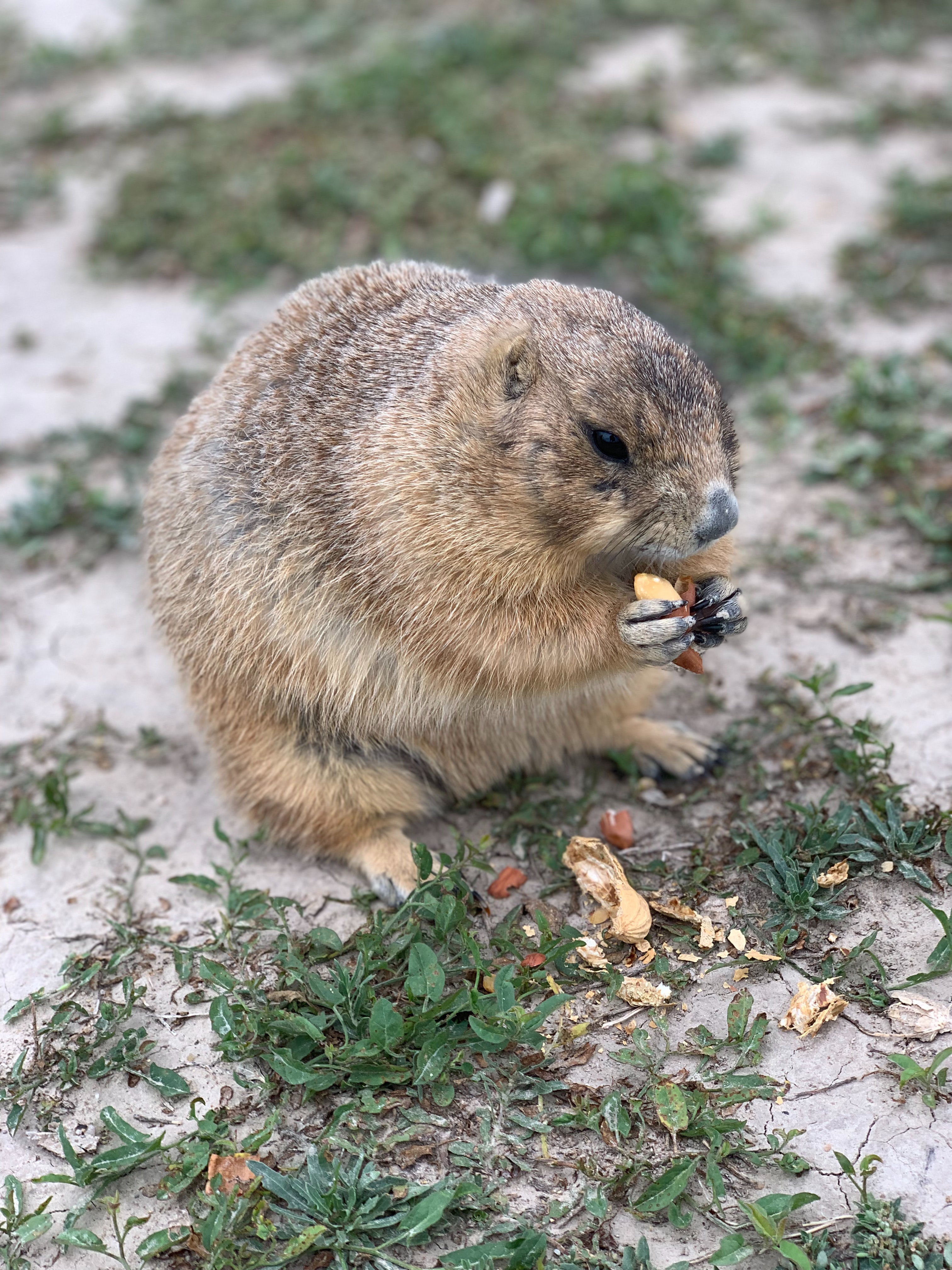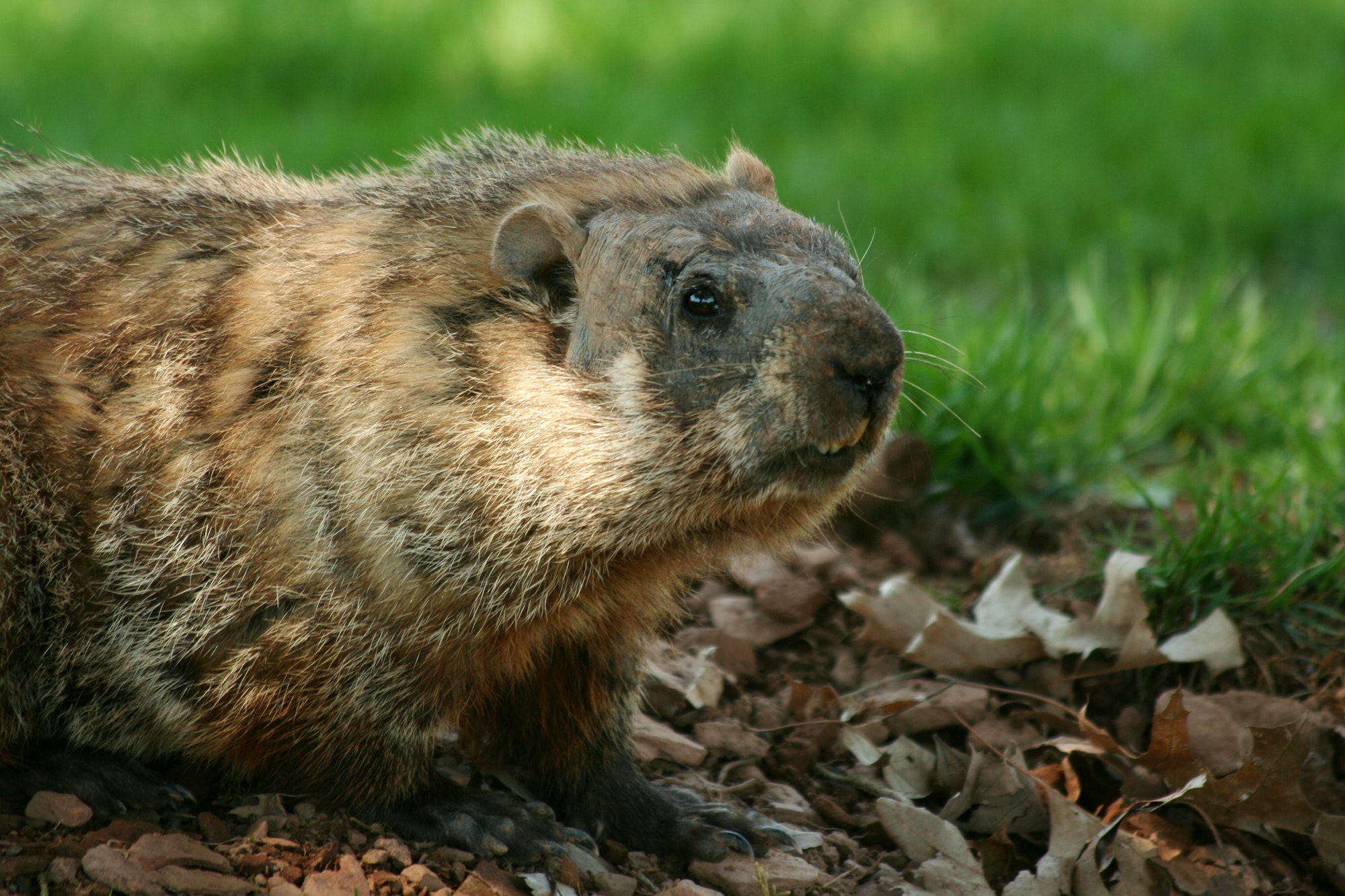What Are Woodchucks?
How much wood would a woodchuck chuck if a woodchuck could chuck wood? We’ve all been asked this puzzling question before and most of us, save for a few woodchuck behavioral specialists, have no idea how much wood a woodchuck would chuck. In fact some would have to admit they don’t even know what a woodchuck is and though we won’t be covering the complex algorithms needed to predict how much wood a woodchuck would chuck, we will at least explore the nature of this mysterious critter and what to do if you find one living in your yard.
It turns out woodchuck is just another name for the groundhog. These small furry rodents are very common in the midwest and northeast United States. In fact, if you live in that area you have probably seen one before. Woodchucks often coexist with humans in more rural and even suburban areas. The shared habitats of humans and woodchucks, paired with their large numbers can mean that woodchucks often become pests.

Woodchucks create large complex burrows that can reach over 60 feet long with multiple entrances. These burrows often tear up lawns, create hazards for unsuspecting ankles, and cause structural damage to foundations. To make matters worse, woodchucks are herbivores that need to eat massive amounts of food to sustain them through hibernation. This means that your precious garden could be in serious danger. Yes, these little loveable little fuzz balls may seem harmless but there will be murder in your eyes when yet again your garden salad is reduced to only jalapeno peppers.
If you find yourself with a woodchuck that has overstayed his welcome, there are a few options you can try to get rid of them and several more that you should definitely not try. There are many different woodchuck repellents available online and in stores. A few common ones include the use of fox, coyote, wolf or bobcat urine to scare the woodchuck away. On the plus side most things, including in-laws and even robbers will stay away from your house if they smell wolf urine. Alternatively if you own a cat, clumps of used litter can have the same effect on woodchucks. Apply the repellent to each of the borrow’s entrances and cover the hole with dirt. If you are unable to locate the woodchuck’s lair, apply the repellent around your garden.

If repellent doesn’t do the trick, it is time to move on to traps. Place traps near the burrow entrances or in your garden. Bait the trap with the garden vegetables that it clearly loves so much and check the traps daily for a catch. If you manage to trap your infuriating intruder, take it to a remote wooded area and release it. Alternatively, if you are feeling extra vindictive, introduce it to your neighbor’s garden which is somehow always better than yours!
After setting up traps, If your irksome invader still manages to elude you, it is time to call the professionals. Search the internet for local pest removal companies. Within a week they should have the problem resolved. Don’t want to mess around with your pesky pest at all? You can even start with this method. It is definitely the least stressful way to resolve the issue.
Yet, I know a few of you have watched caddyshack so more importantly here are a few ways to NOT get rid of woodchucks. (1)Pick it up. Woodchucks are wild animals with razor sharp front teeth. Don’t try to approach or handle a woodchuck in any way. (2)Flood the burrow. Woodchuck burrows are already a threat to your foundation. Adding water will only compound the issue. Keep the hose away for this one guys. (3) Blow the woodchuck away using explosives. He may have eaten your spinach and your broccoli, you probably twisted your ankle in his burrow several times and while it may seem quite satisfying, trying to blow up the woodchuck would be a mistake to the tune of guaranteed foundation damage, personal injury, and jail time.
So now you know what a woodchuck is and what to do if uncle woodcharles decides to visit. Woodchucks are an essential part of our forest and meadow habitats. These small critters are amazing creatures and deserve our respect and admiration. However, if one of these rodents takes up residence in your yard, it is in your best interest to kindly get him to leave.
Author: Jesse Wilke
Kettering University
Works Cited
- Groundhog.” , Facts and Photos, National Geographic, 31 Jan. 2020, www.nationalgeographic.com/animals/mammals/g/groundhog
- “Groundhogs.” Almanac.com, Old Farmer’s Almanac, 2020, www.almanac.com/pest/groundhogs








